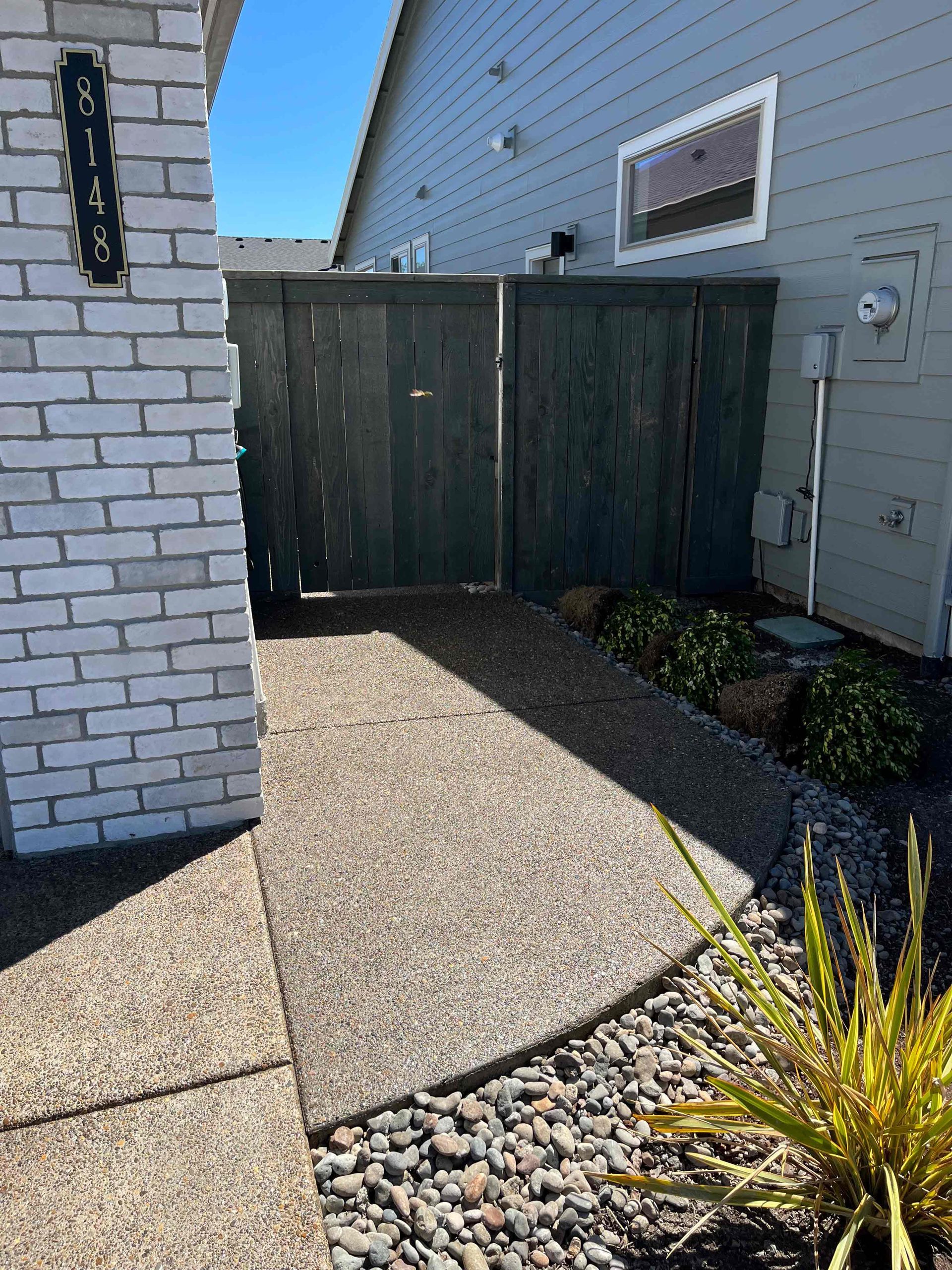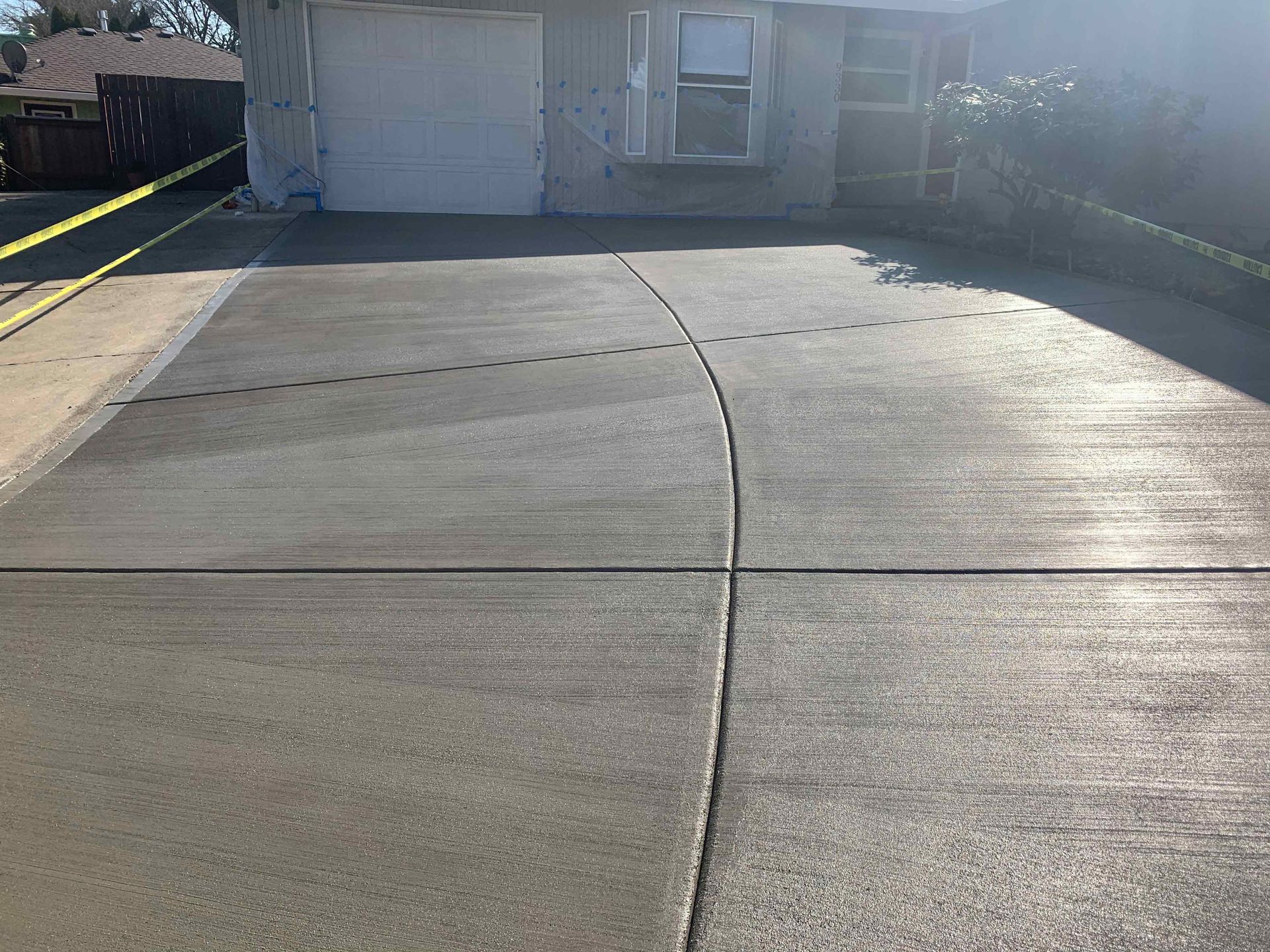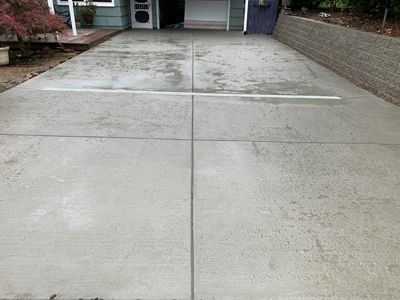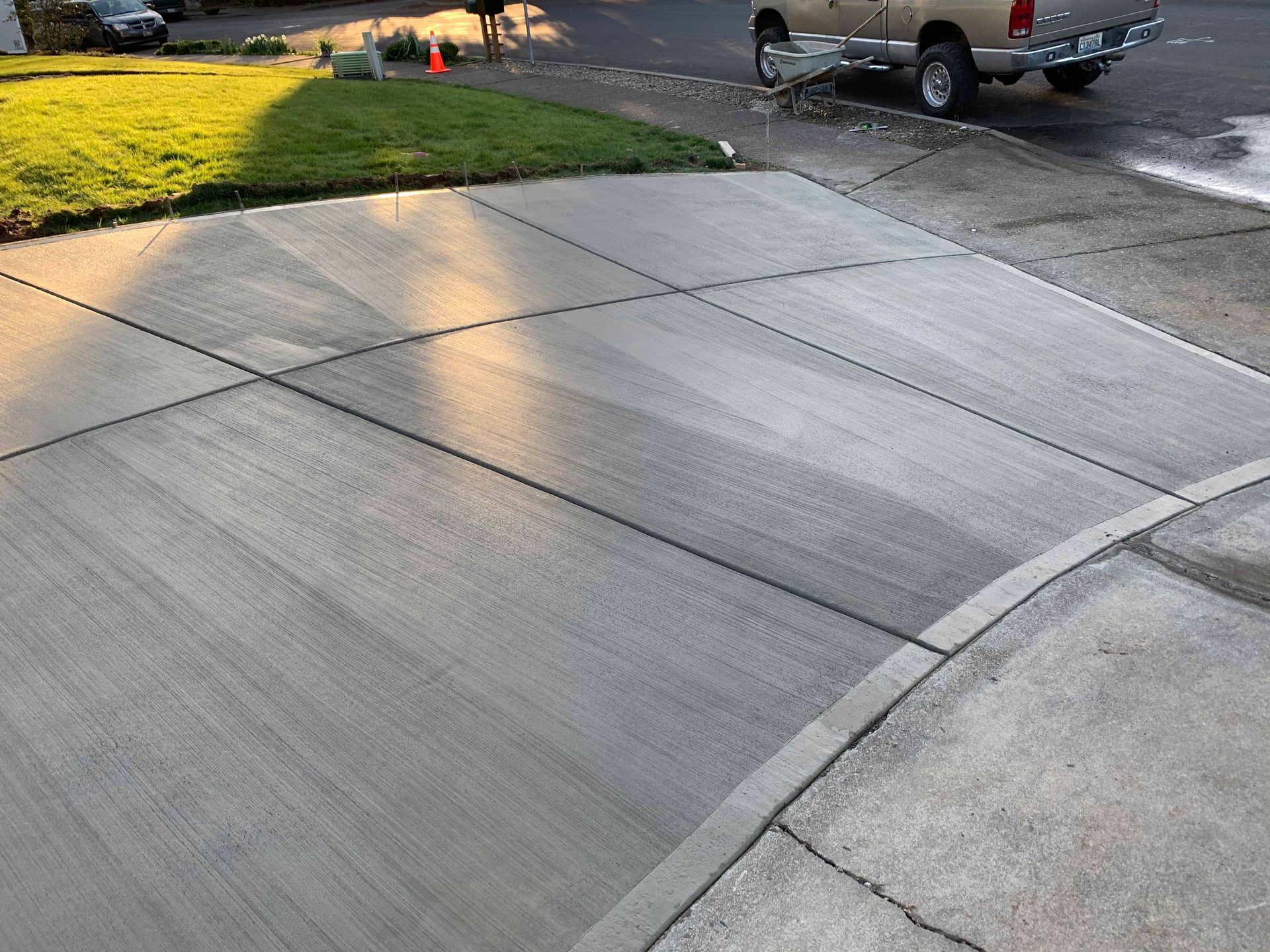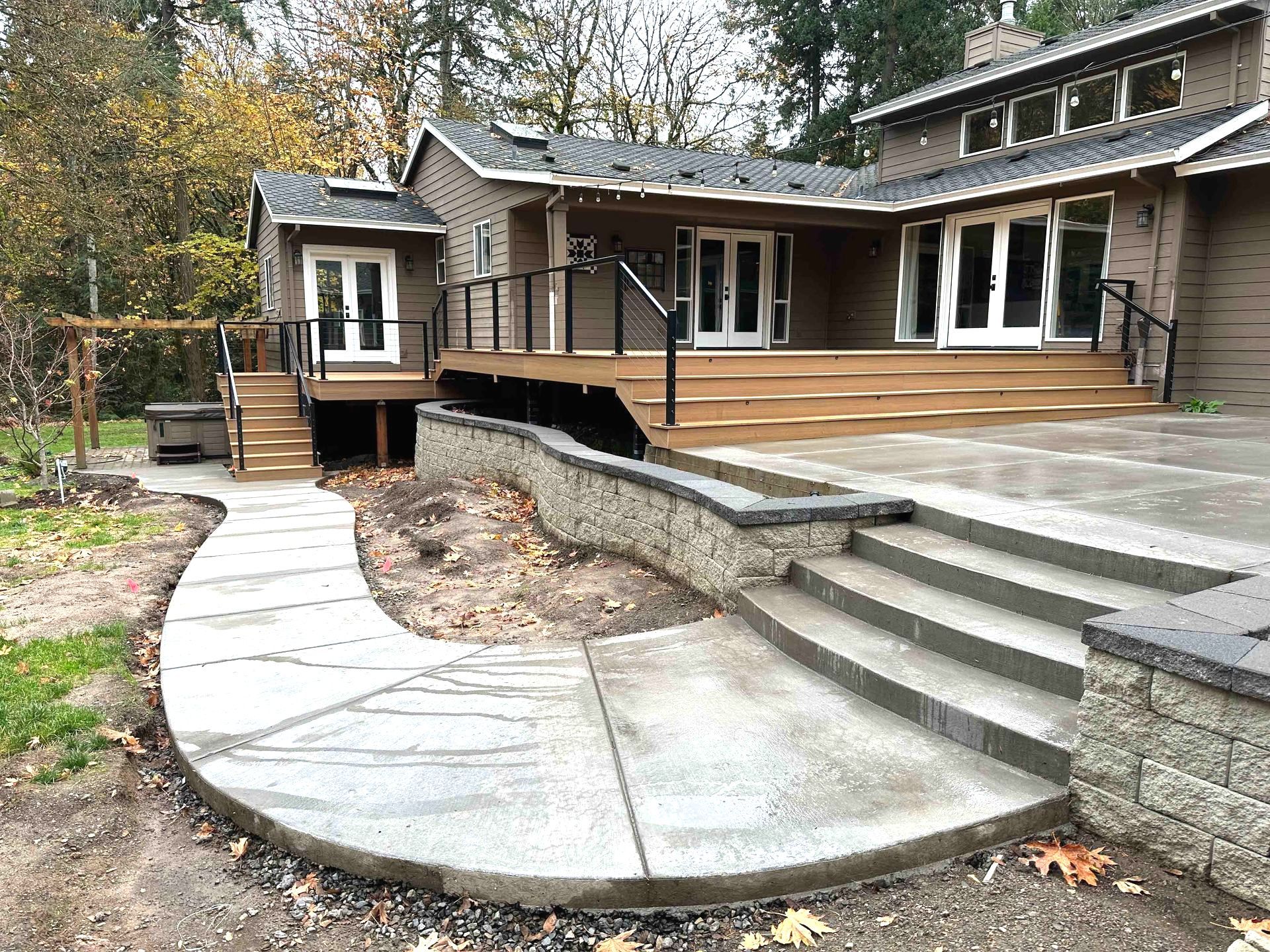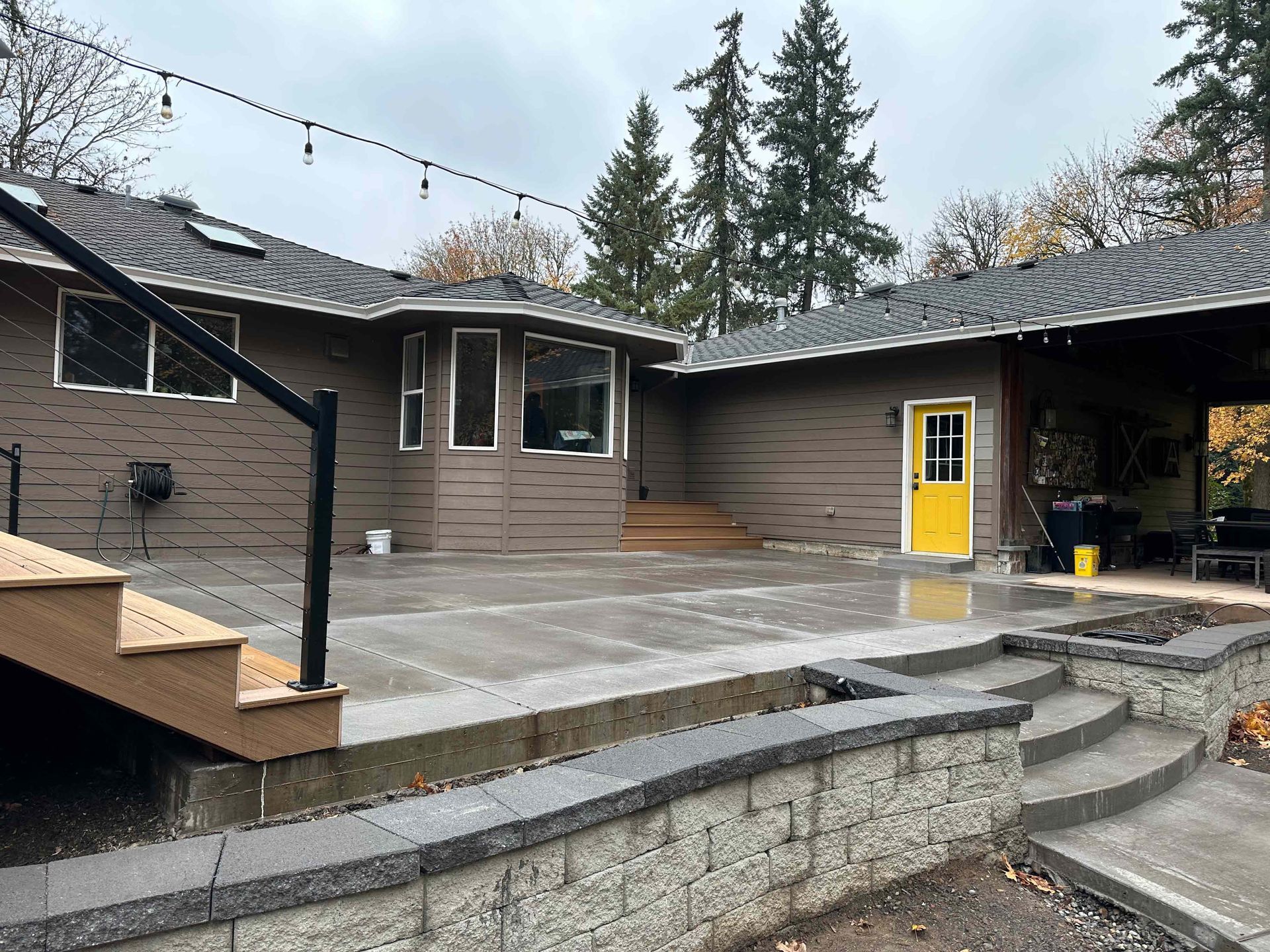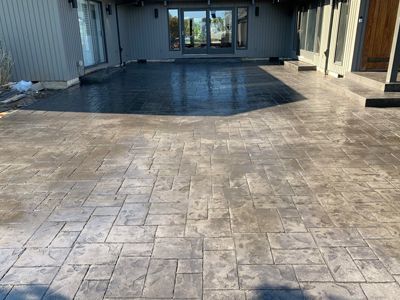Monday - Saturday: 7AM - 7PM
Concrete Removal: A Comprehensive Guide 2024
Are you noticing cracks across your driveway? Or perhaps you're embarking on a renovation project and find yourself faced with the daunting task of removing old, worn-out concrete. Whether you're a homeowner, contractor, or DIY enthusiast, the need for concrete removal can arise for various reasons, each with its own challenges and considerations.
Whether you're dealing with structural damage, planning a renovation, or simply curious about the process, this comprehensive guide will tackle everything you need to know about
concrete removal
and the cost involved.
Understanding Concrete
Concrete is a composite material comprising cement, aggregates (like gravel and sand), water, and optional additives such as admixtures. The water-to-cement ratio, mixing method, curing conditions, aggregate quality, and environmental factors significantly affect its strength and durability.
Types of concrete include plain or ordinary concrete, reinforced concrete with embedded steel reinforcement bars, prestressed concrete utilizing tensioning techniques, lightweight concrete for reduced density, and high-performance concrete engineered for exceptional strength and durability. Understanding these aspects is crucial for effective concrete removal, ensuring proper handling and disposal of materials.
Conditions that Indicate Concrete Removal
Know when your concrete is calling for concrete removal and replacement. Here are some signs to look for:
- Cracks and Spalling: When concrete shows extensive cracking or spalling, it means that the structural integrity of the material has been compromised. This can pose a safety risk and compromise the stability of the structure.
- Uneven Settlement:
If there are settlement issues with the concrete, it can create hazards and instability.
- Outdated or Damaged Infrastructure: If a structure made of concrete, such as a bridge or a road, is outdated or damaged, it can create safety concerns.
- Safety Concerns: If there are hazardous elements, such as protruding rebar, present in concrete, it can pose safety risks. Therefore, prompt removal is necessary to prevent accidents.
- Frost Heave: This occurs when moisture in the ground freezes, pushing concrete slabs upward. This can lead to uneven surfaces and structural damage, posing safety risks.
METHODS OF CONCRETE REMOVAL
There are various methods available for concrete removal, offering numerous benefits and suitability for different project requirements.
A. MECHANICAL METHODS
- Jackhammering: Using a jackhammer involves breaking up concrete with a pneumatic hammer, which delivers powerful blows to the surface, fracturing and dislodging the material.
- Concrete Sawing: Concrete saws equipped with diamond blades are used to cut through concrete surfaces, allowing for precise removal along desired lines or patterns.
- Grinding and Milling: Grinding machines equipped with abrasive wheels or milling machines with rotating cutting heads are used to grind away or mill down concrete surfaces, removing layers gradually.
B. CHEMICAL METHODS
- Concrete Dissolvers: Chemical concrete dissolvers break down the bonds within the concrete, facilitating its removal. These solutions are applied to the surface and allowed to penetrate before the softened concrete is scraped away.
- Acid Etching: Acid etching involves applying acidic solutions, such as hydrochloric acid, to the concrete surface to dissolve the top layer, making it easier to remove. Proper safety precautions must be taken when using acid-based products.
C. THERMAL METHODS
- Heat Lancing: Heat lancing utilizes high-temperature flames to thermally weaken and break down the concrete, facilitating removal. This method is particularly effective for removing thick or heavily reinforced concrete.
- Thermal Lance Cutting: Thermal lance cutting involves using oxygen-fueled thermal lances to heat and melt the concrete, allowing for precise cutting and removal of sections or shapes.
D. HYDRAULIC METHODS
- High-Pressure Water Jetting:
High-pressure water jetting involves directing streams of pressurized water onto the concrete surface, effectively eroding and breaking it apart for removal. This method is versatile and can be used for various concrete removal tasks.
- Hydraulic Bursting: Hydraulic bursting uses hydraulic power to expand hydraulic pistons or wedges inserted into pre-drilled holes in the concrete. The expansive force breaks the concrete apart from within, allowing for controlled removal without vibration or noise.
Planning and Preparation
Before beginning concrete removal, assess the site thoroughly to spot potential dangers, understand the work scope, and plan the removal process effectively. Additionally, depending on the project's location and nature, securing permits from local authorities may be required to meet regulations and avoid legal complications.
During concrete removal, safety is non-negotiable, observe measures like wearing personal protective equipment, setting up work zone barriers, and adhering to safe equipment operation practices to safeguard workers and bystanders.
Challenges and Solutions
Dealing with challenges during concrete removal requires innovative solutions. These include addressing obstacles like reinforcement bars and embedded objects within the concrete, which can be tackled with specialized equipment such as rebar cutters and professional expertise for safe handling.
It is also important to take note of adverse weather conditions like rain, extreme heat, or freezing temperatures that can impact efficiency and safety, but scheduling work during favorable weather or implementing protective measures can mitigate these effects and ensure successful concrete removal.
Post-Removal Care
After concrete removal, comprehensive post-removal care is essential to ensure safety and readiness for future use. This includes surface preparation to level the area, remove debris, and apply coatings or sealants as needed for future construction or use.
Conducting a thorough inspection of the site to identify any remaining hazards or debris is crucial for preventing accidents, with prompt attention needed for any remaining concrete fragments or protruding rebar.
Lastly, repairing and restoring the area to its original condition involves filling gaps, smoothing surfaces, and addressing any damage caused during removal to ensure safety and readiness for its intended purpose or future construction projects.
Concrete Removal Cost Factors
Concrete removal is a challenging task that requires specialized equipment and skilled labor. The cost of removing concrete can vary significantly, depending on several factors.
Concrete removal cost factors include labor costs, equipment rental or purchase, and disposal fees. The amount of labor required depends on the size, location, and accessibility of the concrete structure. Equipment can also impact costs, as can disposal fees, which vary depending on the location and regulations of the disposal site.
Achieve a Successful Concrete Removal Project with Detail Concrete!
Are you planning a concrete removal project for your property? Look no further than Detail Concrete for a successful outcome! It's important to use proper concrete removal techniques to avoid any damage to your property and ensure the job is done safely and efficiently. That's why it's crucial to hire a professional team with experience in concrete removal.
Attempting to remove concrete on your own can be dangerous and result in costly mistakes. Professional concrete removal teams have the necessary equipment and expertise to handle any project, big or small. Detail Concrete is committed to providing top-quality results to ensure your project is completed to your satisfaction.
Don't risk damaging your property or injuring yourself, hire Detail Concrete for your concrete removal needs.
Contact us today for a consultation and take the first step towards a successful concrete removal project.
